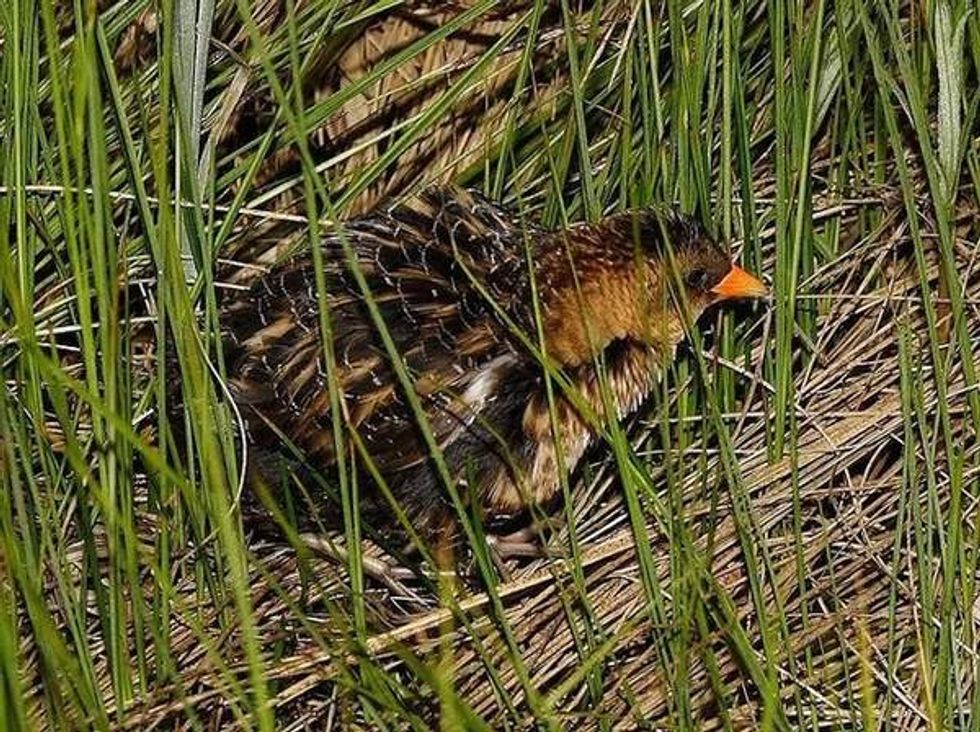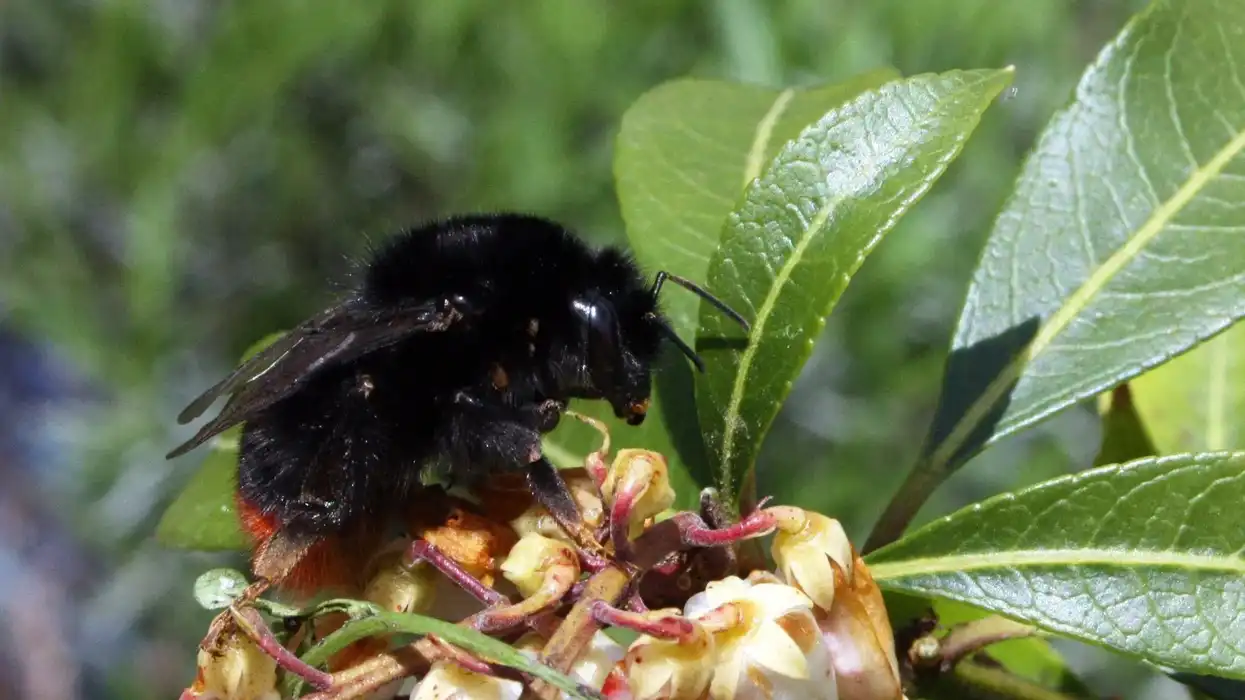Yellow flies or Diachlorus ferrugatus are biting flies that are mainly found in the U.S. states of Texas and Florida along with some Central American countries like Belize and Costa Rica. These flies have garnered quite a reputation for being a proper nuisance to people in the warm months.
However, only females bite humans and other animals for their warm blood. We can say that these flies are hematophagous.
According to history, these flies came to the U.S. from Mexico. The only subspecies in the genus of Diachlorus to be present in the United States is the yellow fly.
All the other 22 types of flies in this genus are found in the regions of Central America. More recently, yellow flies have also been seen in the Bahamas in the West Indies.
Read on for more information about these yellow pests. For facts on other animals, take a look at red paper wasps and woolly bears.
Yellow Fly Interesting Facts
What type of animal is a yellow fly?
Yellow flies (Diachlorus ferrugatus) are a species of horse-fly that is endemic to certain areas of North and Central America. This fly is known for its bites which are quite painful. When this fly bites, they feed on the warm blood of humans.
In this regard, there are similarities between them and mosquitoes. However, a mosquito bite isn't as severe and painful as a yellow fly bite blister. These yellow flies are often confused with the species of deer fly.
What class of animal does a yellow fly belong to?
Yellow flies (Diachlorus ferrugatus) belong to the class of Insecta. The genus of this fly is Diachlorus and the family Tabanidae.
How many yellow flies are there in the world?
We all know that flies are numerous and they cannot be counted. This applies easily to the population of yellow flies.
Due to the process of tracking the number of every fly is not possible, there is no estimation for the population of yellow flies. While they are abundant in nature, one must be careful to not confuse them with the species of deer fly.
Where does a yellow fly live?
These flies inhabit the areas of water in forested areas. They are mostly found in the U.S., ranging from the state of Texas to New Jersey.
Apart from the state of New Jersey, yellow flies predominantly inhabit the state of Florida. As a result of its large population there, this insect is also referred to as the Florida yellow fly.
Apart from America, this deer fly lookalike species is also spotted in the Central American countries of Belize and Costa Rica. In Belize, these flies are interestingly called doctor flies.
What is a yellow fly's habitat?
The habitat of yellow flies is aquatic. Diachlorus ferrugatus, belonging to the family Tabanidae, are very aggressive biting horse-flies.
These flies are generally found near sources of water surrounded by heavy vegetation. These insects need the thick foliage in their habitat so that they can hide amongst them. One of the most inhabited plants for these pests is Spanish moss (Tillandsia usneoides).
It has been observed in the state of Florida and elsewhere that yellow flies are diurnal animals, meaning they are most active during the day. As is the case with all adult horse-flies, females of the doctor fly bite humans and other animals.
Males are not known to bite. Interestingly, yellow flies have wings however, they make no sound with them. Many humans are only aware of their presence once they have experienced painful bites from yellow flies.
Like others in the Tabanidae family, they are found flying in the warm spring, summer, and autumn months. This is why they are mostly observed in places like Florida and Central American countries where the summer months are longer.
Who do yellow flies live with?
Like many animals and insects, deer and horseflies are solitary. Yellow flies are no exception to this rule. These biting pests from Florida remain alone most of the time except when they are either hunting for food or when males and females come together for mating.
How long does a yellow fly live?
Yellow flies, like horse flies and deer flies, live for a little over a year. Their entire life cycle from eggs to larvae to pupa to adult takes about one year. However, once the body of the pupa matures into an adult, this pest only lives for 30 to 60 days.
How do they reproduce?
Once both male and female adult flies emerge from their larvae state, they are known to mate. Females will feed once they emerge from the stage of larvae. Female yellow flies feed on blood to help them breed their eggs.
Once the mating is over between adult flies, the female will deposit the egg mass on any surface over water. They can be anything from rocks to leaves to crevices.
Female adults generally lay around 50 eggs and the eggs hatch within 5 to 12 days. Once the egg is hatched, the larvae drop to the ground from the egg. These larvae will start feeding on the decayed leaf or organic matter from the ground or the water.
What is their conservation status?
Due to their high numbers in the state of Florida and other places in the North American continent, there is no immediate threat to the population of yellow flies. Yet, this biting species of fly hasn't been listed in any of the major conservation control lists. According to the IUCN, yellow flies are Not Evaluated due to their abundance.
Yellow Fly Fun Facts
What do yellow flies look like?
Yellow flies are known to mirror the appearance of other tabanids. They are very similar to deer flies as well. Its body is yellow which results in its name.
Except for the forelegs, the hind legs are black. These flies have wings that are different from that of a mosquito. The wings are transparent and contain a brown colored patch at the apex of the wings.
A yellow fly has green eyes which is a very distinct feature. These green eyes are accompanied by two purple patches near the head. During the state of larvae, they are white.
Female yellow flies can be recognized by others due to the very narrow amount of space between their eyes.
How cute are they?
One may think that this yellow-colored fly is cute, but once you experience a bite from this pest during a relaxing trip to the state of Florida, your opinions might change. We can categorically state that no one will find this species of fly to be adorable.
How do they communicate?
Research into how flies communicate is still inconclusive. Various researchers have suggested that flies can communicate with each other by releasing several close-range vibrations. We can only speculate that this is how yellow flies communicate as well.
How big is a yellow fly?
Yellow flies are small insects. Adults of this species of fly measure at an average of 0.4 in (1 cm). In comparison, a giant burrowing cockroach is almost four times bigger than a yellow fly.
How fast can a yellow fly fly?
There is no concrete data that can tell us about how fast yellow flies can travel in the air. They are fairly fast animals that can attack quite quickly in swarms. In general, the average speed of a common housefly is thought to be 5 mph (8 kph).
How much does a yellow fly weigh?
Due to their small size, the weight of yellow flies is negligible.
What are the male and female names of the species?
There are no distinct names for male and female adults of yellow flies. They are simply referred to as male and female flies.
What would you call a baby yellow fly?
Again, there are no names for a baby yellow fly.
What do they eat?
Yellow flies are thought to feed on flower nectars and pollen. In addition to that, female flies are known to prey on the warm blood of humans and other animals. This helps them to lay their eggs.
Are they dangerous?
Yellow flies are dangerous but, they are not poisonous. Their quick bites sting more than a mosquito bite because they don't have an anesthetic to inject like mosquitoes.
Bites from these flies can cause a lot of blood loss. After a bite from a yellow fly, an allergic reaction is very common. Yellow flies are also known to transmit several diseases to animals.
Would they make a good pet?
No, these pests would not make a good pet. In an attempt to thwart the yellow fly, Florida citizens create traps. A yellow fly trap along with repellents such as diethyltoluamide, citronella, and bug zappers can help kill these nasty pests. You might also use permethrins to keep these flies away from dogs.
Did you know...
Yellow flies also have another scientific name, Chrysops ferrugatus. This name of Chrysops ferrugatus was given to it in 1805 by the legendary Danish zoologist, Johan Christian Fabricius.
There have been cases where yellow fly bites have been reported near swimming pools in Florida. Swimming pools are a favorite haunt of these pests as they are thought to be drawn by the shiny clean water of the pools.
How many types of yellow flies are there?
Although many experts in Florida only give the name yellow fly to the species of Diachlorus ferrugatus, the real picture is a bit different. The 'yellow fly' moniker is used to classify 12 different yellow-colored biting flies in the state of Florida. All these 12 flies belong to the Tabanidae family.
How do you treat a yellow fly bite?
A typical yellow fly bite lasts for around a week and will cause a swollen and itchy bump. After a yellow fly bite, severe swelling might be a side effect. In this case, yellow fly bite swellings can be treated with a hot bath on the affected portion with apple cider vinegar.
Another yellow fly bite treatment is applying cortisone cream. For more severe yellow fly bites, treatment may include witch hazel. Reparation H cream along with aloe vera is another yellow fly bite remedy.
Here at Kidadl, we have carefully created lots of interesting friendly animal facts for everyone to discover! Learn more about some other arthropods including puss moths or mayflies.
You can even occupy yourself at home by drawing one on our Yellow Fly coloring pages.










